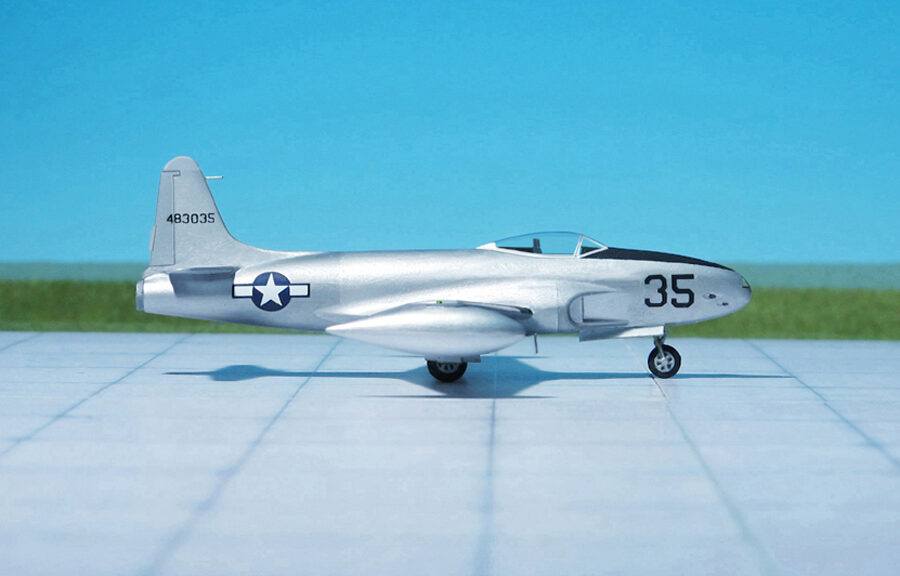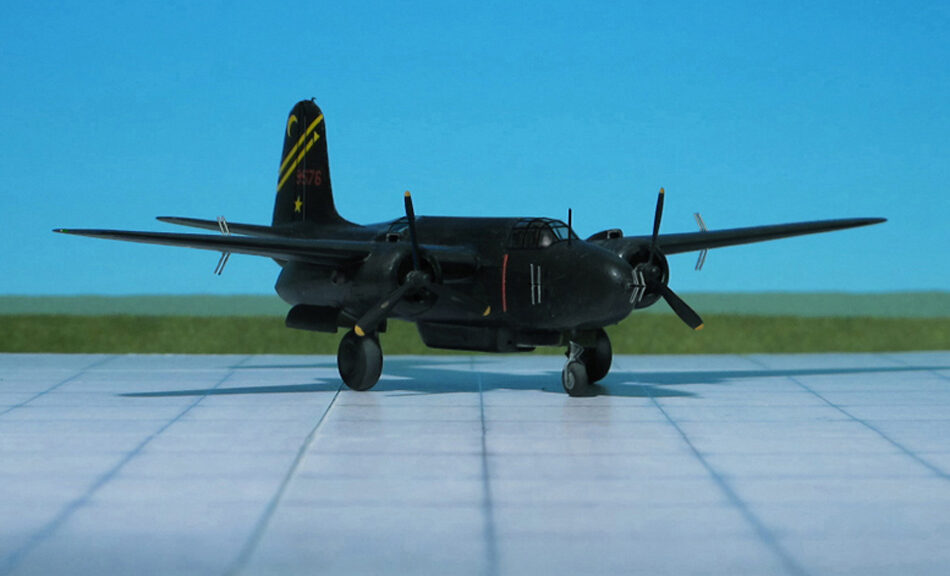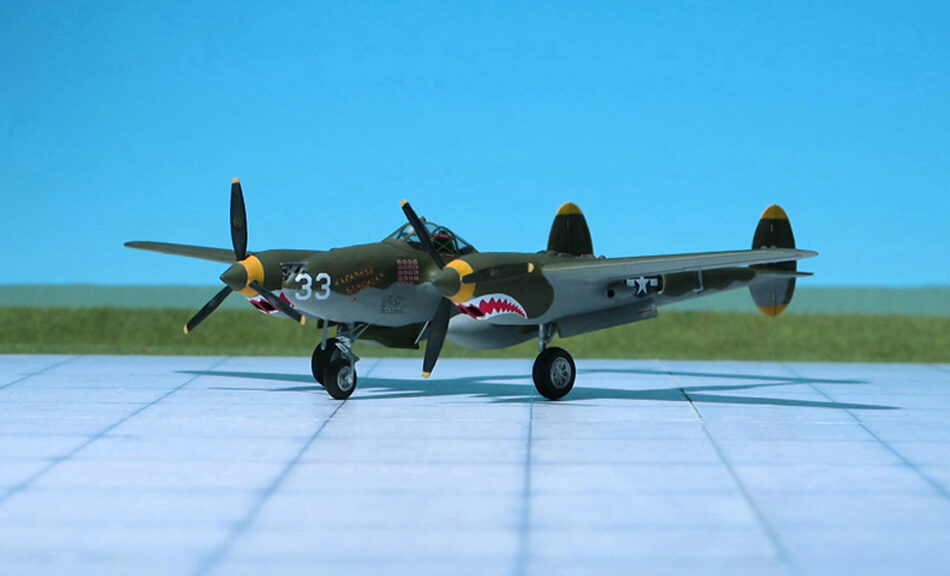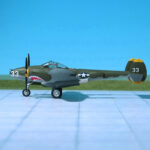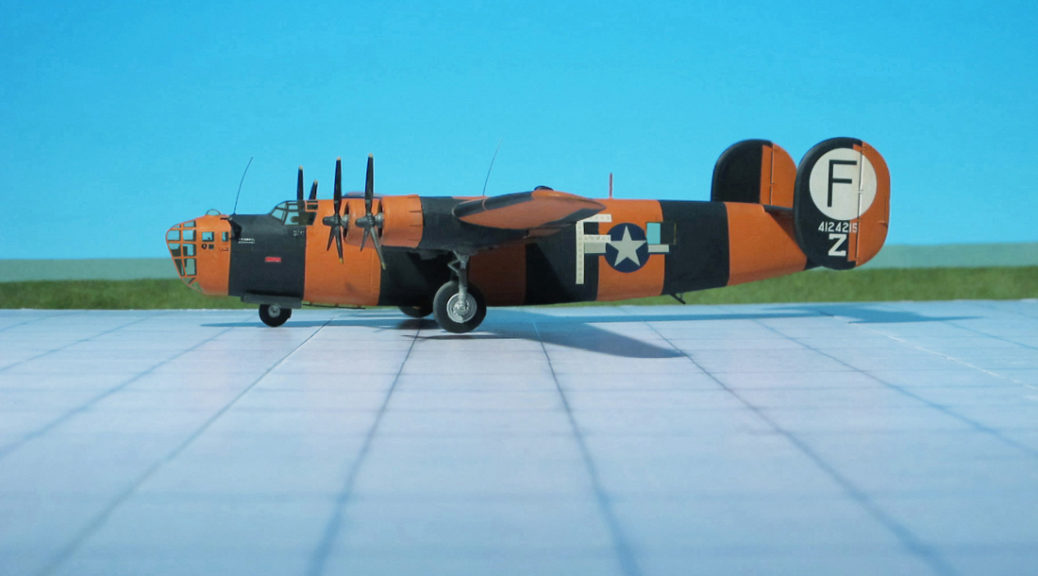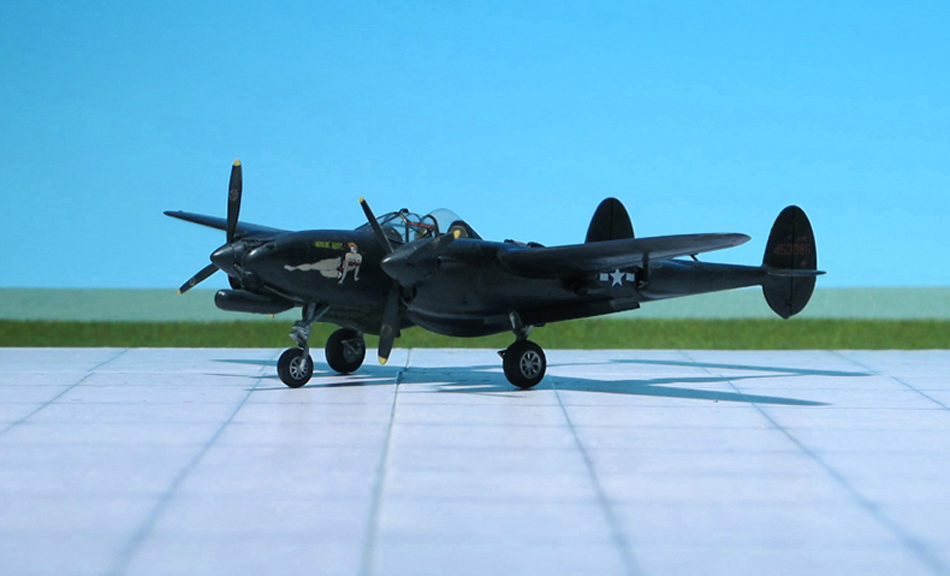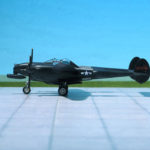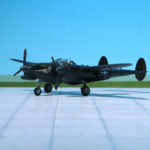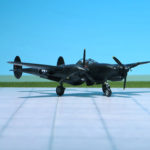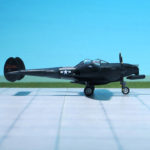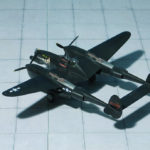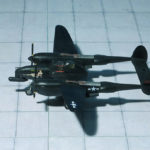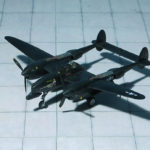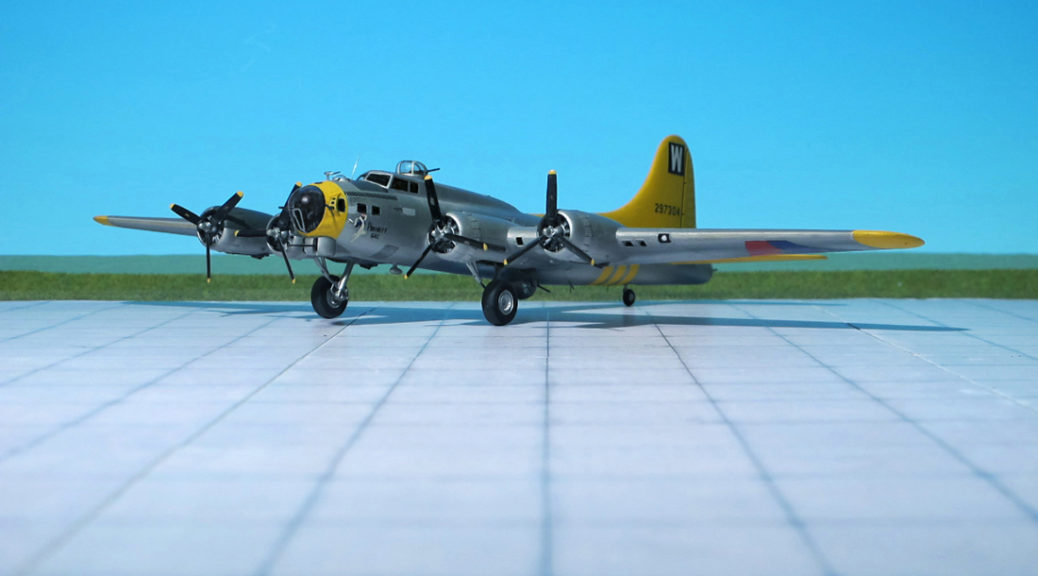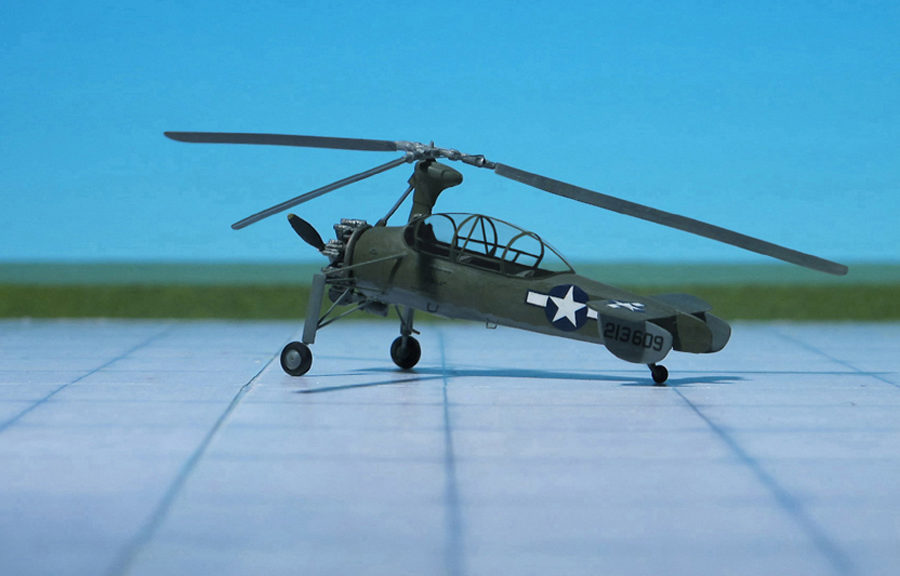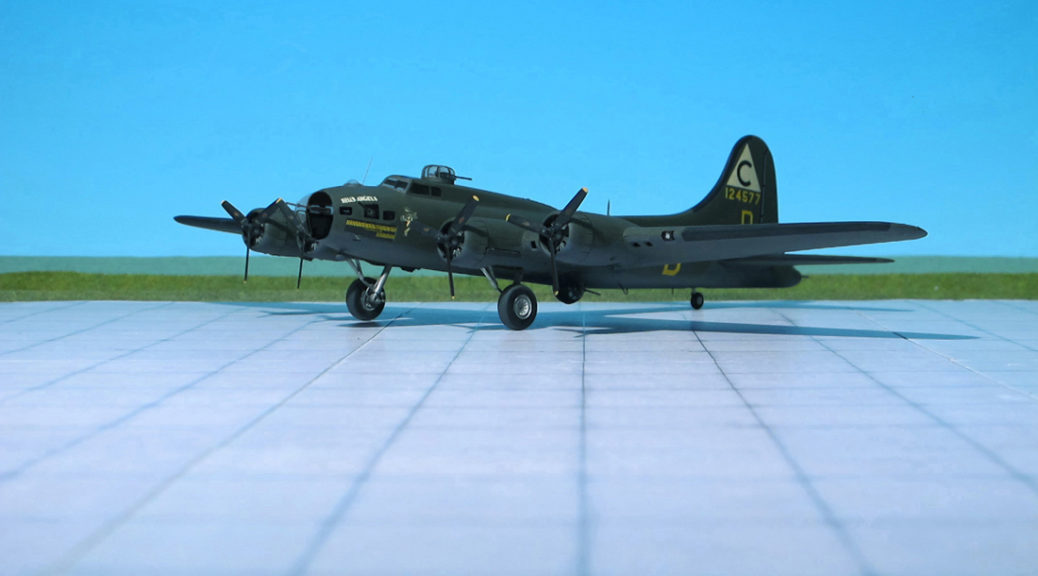TYPE: Interceptor fighter
ACCOMMODATION: Pilot only
POWER PLANT: One Allison J-33-A-35 turbojet engine, rated at 2,100 kp thrust
PERFORMANCE: 492 mph at 40,000 ft
COMMENT: The Lockheed P-80 Shooting Star was the first jet fighter used operationally by the USAAF. Designed and built by Lockheed Aircraft Company in 1943 and delivered just 143 days from the start of the design process, production models were flying but not ready for service by the end of WW II. Designed with straight wings, the type saw extensive combat in Korea with the United States Air Force (USAF) as the Lockeed F-80.
The prototype XP-80 had a conventional all-metal airframe, with a slim low wing and tricycle landing gear. Like most early jets designed during World War II – and before the Allies captured German research data that confirmed the speed advantages of swept-wings – the XP-80 had straight wings, similar to previous propeller-driven fighters. It was the first operational jet fighter to have its engine in the fuselage, a format previously used in the pioneering German Heinkel He 178 V1 of 1939, and the later British Gloster E.28/39 Pioneer demonstrator of 1941. Other early jets generally had two engines because of their limited power, these being mounted in external necelles for easier maintenance. With the advent of more powerful British jet engines, fuselage mounting was more effective, and it was used by nearly all subsequent fighter aircraft.
Concept work on the XP-80 began in 1943 with a design being built around the blueprint dimensions of a British Halford H-1 B turbojet (later called the de Havilland Goblin), a powerplant to which the design team did not have actual access. Lockheed’s team, consisting of 28 engineers, was led by the legendary C. L. „Kelly“ Johnson. This teaming was an early product of Lockheed’s Skunk Works, which surfaced again in the next decade to produce a line of high-performance aircraft.
The impetus for development of the P-80 was the discovery by Allied intelligence of the Messerschmitt Me 262 ‘Schwalbe’ (‘Swallow’) in spring 1943, which had made only test flights of its own first quartet (the V1 through V4 airframes) of design prototypes at that time, all fitted with retracting tailwheel landing gear. After receiving documents and blueprints comprising years of British jet aircraft research, the commanding General of the Army Air Forces, Henry H. Arnold, believed an airframe could be developed to accept the British-made jet engine, and the Materiel Command’s Wright Field research and development division tasked Lockheed to design the aircraft. With the Germans and British clearly far ahead in development, Lockheed was pressed to develop a comparable jet in as short a time as possible. Kelly Johnson submitted a design proposal in mid-June and promised that the prototype would be ready for testing in 180 days. The Skunk Works team, beginning 26 June 1943, produced the airframe in 143 days, delivering it to Muroc Army Airfield on 16 November.
The project was so secret that only five of the more than 130 people working on it knew that they were developing a jet aircraft, and the British engineer who delivered the Goblin engine was detained by the police because Lockheed officials could not vouch for him. After the engine had been mated to the airframe, foreign object damage during the first run-up destroyed the engine, which delayed the first flight until a second engine (the only other existing) could be delivered from Britain.
The first prototype was nicknamed „Lulu-Belle“ (also known as „the Green Hornet” because of its paint scheme). Powered by the replacement Halford H1 taken from the prototype de Havilland Vampire jet fighter, it first flew on 8 January 1944.The donated British jet program data had no doubt proved invaluable. In test flights, the XP-80 eventually reached a top speed of 502 mph at 20,480 ft, making it the first turbojet-powered USAAF aircraft to exceed 500 mph in level flight, following the August 1944 record flight of 502 mph by a special high-speed variant of the Republic P-47J Thunderbolt. Contemporary pilots, when transitioning to pioneering jets like the Shooting Star, were unused to flying at high speed without a loud reciprocating engine and had to learn to rely on the airspeed indicator.
The second prototype, designated XP-80A, was designed for the larger General Electric I-40 engine (an improved J31, later produced by Allison as the J33). Two aircraft were built. one was nicknamed the Gray Ghost after its “pearl gray” paint scheme, while the second aircraft was left unpainted for comparison of flight characteristics, became known as the Silver Ghost. The XP-80A’s first test flight was unimpressive, but most of the problems with the design were soon addressed and corrected in the test program. Initial opinions of the XP-80A were not positive and the aircraft were primarily testbeds for larger, more powerful engines and air intake design, and consequently were larger and 25% heavier than the XP-80.
The Shooting Star began to enter service in late 1944 with 12 pre-production YP-80As. A 13th YP-80A was modified to the sole F-14 photo reconnaissance model and lost in a December crash.
The initial production order was for 344 P-80As after USAAF acceptance in February 1945. A total of 83 P-80s had been delivered by the end of July 1945 and 45 assigned to the 412th Fighter Group (later redesignated the 1st Fighter Group) at Muroc Arma Air Field. Four were sent to Europe for operational testing (demonstration, familiarization, and possible interception roles), two to England and two to Italy, but after two accidents, one in England and one in Italy, the YP-80A was temporarily grounded. So the Lockheed Shooting Star saw no actual combat during the conflict.
After the war, the USAAF compared the P-80 and Messerschmitt Me 262 concluding, “Despite a difference in gross weight of nearly 900 kg, the Me 262 was superior to the P-80 in acceleration, speed and approximately the same in climb performance. The Me 262 apparently has a higher critical Mach number, from a drag standpoint, than any current Army Air Force fighter”.
Production oft he Shooting Star continued after the war, although wartime plans for 5,000 were quickly reduced to 2,000. A total of 1,714 single-seat F-80A, F-80B, F-80C, and RF-80s were manufactured by the end of production in 1950, of which 927 were F-80Cs (including 129 operational F-80As upgraded to F-80C-11-LO standards). However, the two-seat TF-80C, first flown on 22 March 1948, became the basis for the T-33 trainer, of which 6,557 were produced (Ref.: 24).
